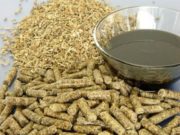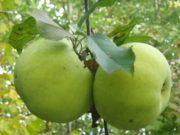How to preserve beet pulp
Cattle breeders take this issue very seriously, because pulp is a nutritious and healthy feed for livestock. Most often it is prepared in dry form.
If dry beet pulp is stored correctly, it will be possible to feed animals with it for quite a long time. All recommendations are important and should not be neglected.
Content
Rules for storing dry beet pulp
In order not to spoil healthy food, you need to follow all the necessary recommendations.
- Dry pulp can be stored in a room whose humidity is not higher than 60%. Higher temperatures will lead to the appearance of mold, the development of harmful microorganisms and fungi. As a result, the pulp will become damp and unfit for consumption.
- The optimal temperature limits are considered to be thermometer readings from 0 to + 25 °C. At higher temperatures, even in dry food, the fermentation process can begin, and at sub-zero temperatures, the food will simply freeze.
- To store dry beet pulp you will need simple bags. There is no need to worry about mice chewing them through; they don’t like the taste of the bags.
- For bags made of pulp, you need to make a hill out of hay or wooden boards. You can’t just put it on the floor - there’s a lot of dirt there, it’s damp and cold.
Watch the video:
Storing raw beet pulp
To store fresh pulp you need a cold room or refrigerators.But even in such conditions it will be usable for only 3 days. To increase the shelf life, the raw pulp is ensiled - the silage container is filled, pressed, and sealed so that air does not get inside.
See video: How beet pulp is stored in a Ukrainian village - in an earthen pit with brick walls.
The pulp can be ensiled (this is a kind of canning of beet tops). This process is worth watching in the video:
What should a warehouse be like for storing dry pulp?

It is impossible to place pulp in an unprepared room. The warehouse must have a sealed roof, windows, doors and holes for ventilation. Under no circumstances should it be wet. All dust inside the structure should be removed. The walls and ceiling of the warehouse must be whitewashed with lime, and the floor (usually concrete or asphalt) must be carefully cleaned of dust and pulp residues from the previous year, and then disinfected with bleach or chloramine solution. If cracks and crevices are found near the walls, they should be sealed with cement mortar.
To prevent water from entering the storage room from the outside, it must be “surrounded” with a ditch along the entire perimeter or a blind area must be made. In winter, snow should not be allowed to lie around the room; it must be shoveled away at a distance of no less than 2 m from the walls.
Dry pulp storage mode
Those who store large stocks of this feed know that daily control of temperature (to prevent self-heating) and humidity in the warehouse is an integral part of storing pulp.
External signs of forage help determine whether the pulp is spoiling or not. You should be wary:
- fermentation smells;
- damp and moldy mounds on the surface;
- steam release;
- frost on the surface (evidence of self-warming).
If the pulp is dried evenly, and before storing it is cooled to a temperature of 20-35 ° C, and also provided that the warehouse is well closed, the room does not need to be ventilated.
By following all the rules for storing dry pulp, you can feed your livestock healthy forage throughout the winter.






















